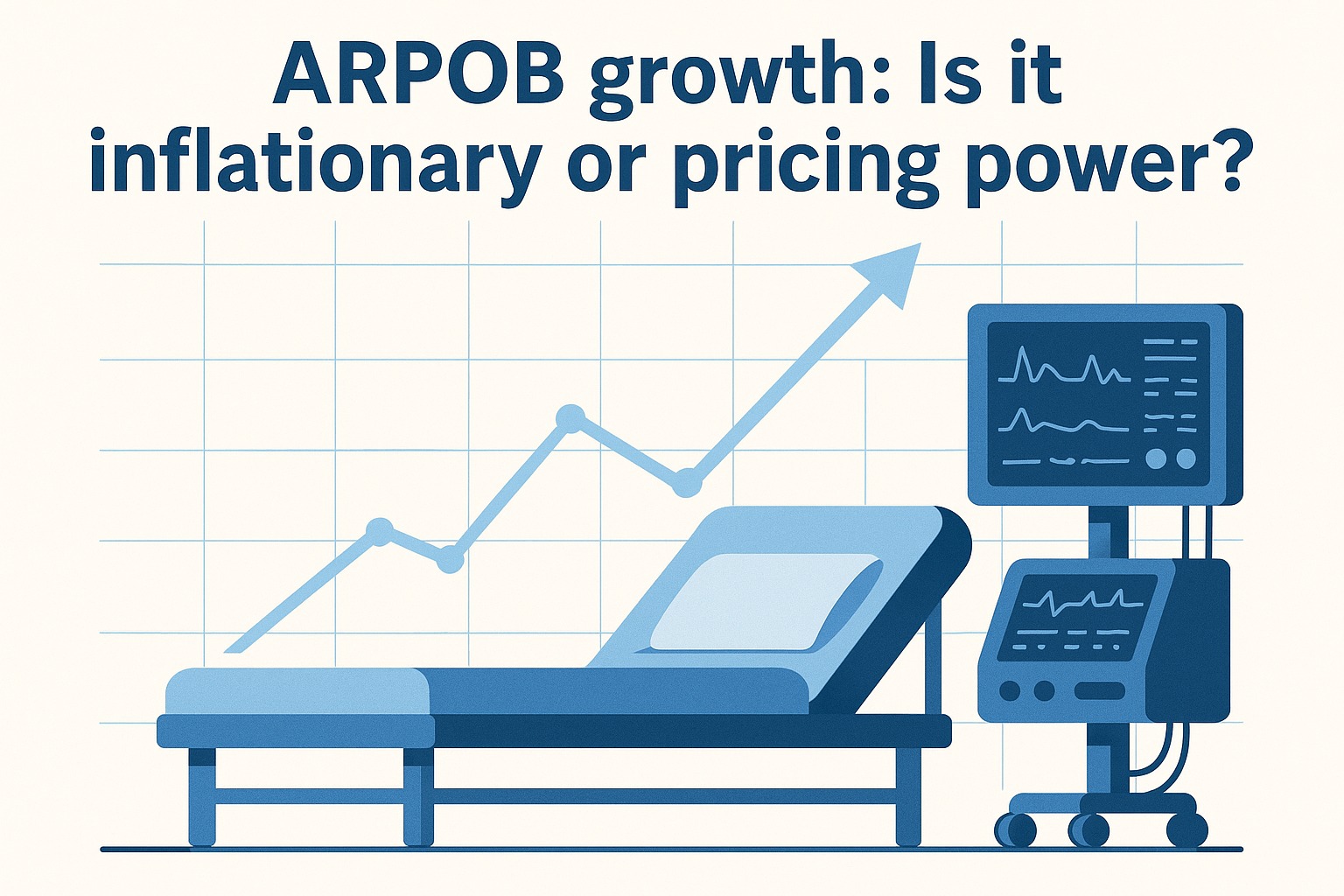Short Recap: In my last article, deliberation was on the growth driver of the hospital industry in the last decade—i.e., ARPOB (average revenue per bed). To establish the fact, we had sampled 4 hospitals with a size mix—NH, Kovai, Apollo, and Fortis Healthcare—and mapped their revenue growth with capacity expansion. Assuming a simple relationship, revenue growth is proportional to growth in capacity and ARPOB. The below graph clearly indicated that sales growth was led by ARPOB growth in last decade
Our attempt in this article is to deliberate how we should pinpoint the best opportunity and “Make Wealth From Health.”
The first step towards identifying an opportunity in industry is to understand the per-bed economics of hospitals. To make a baseline case of growth, we will use our sample hospital data and estimate inflation in expense.
Sample Hospitals: Max, NH, Kovai, KIMS, Global Health
Take from the above data: Max leads in operating profit per bed at Rs 19279, followed by Global Health , NH, KIMS, and Kovai in the mentioned order. The higher operating profit is not function of operating efficiency but the pricing power of hospitals leveraging their geography and market positioning.
Also, this compels us to think, why do drug expenses vary across hospitals, given that the specialty mix is not so different?
Take from the above data: All Metrics as a Percentage of Revenue
Average operating profit of 26%, with human capital expense of 36%, drugs 23%, and other operating expenses 15%, summing to a total expense of 74%. This again reemphasizes the point that higher value is not generated from business models or economies of scale but from market positioning and pricing power of Hospitals , at least till FY’25
This data leads us to how to estimate the growth of hospitals. Since hospitals have pricing power, base case growth in price hikes can be equaled to estimated inflation of mature hospitals.
Since hospitals have a pricing power to pass on to customers, ARPOB Growth can be estimated as sum = Expected Inflation in Expense + discretionary price hike above and over expense inflation
Take from the above data: Hospitals have hiked prices more than inflation and thus were able to expand their margins
If we take NH and MAX Hospital as mature and operating at optimal occupancy, we can take 6% to 7% as the inflation benchmark. Since the price hike is peaking (ARPOB growth is slowing down and has peaked, and social pressures are mounting), we can assume a moderate hike of 0% to 3% over and above inflation,, depending upon the room available for the hike by the hospital.
Baseline ARPOB Growth = Estimated Expense Inflation (6%) + Expected Price hike (2%) = 8%
Conclusion: Hospital industry has pricing power and may be able to at least maintain their margins in mid-term.
